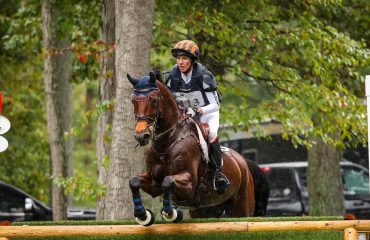By George Williams
Rules in general tend to be boring, even to dressage people. However, they’re important because they affect how we play the game. Rules help to establish a level playing field, they help protect the safety of our riders as well as the welfare of our horses, and they frequently determine how our sport is perceived by others. Dressage, being a sport based on a heritage of traditional fundamental training principles, some of which date back to Xenophon, has rules that are essential to maintaining those traditions.
The challenge, of course, is how to balance and still value those traditions in an ever-changing world. I’m a strong believer in the importance of maintaining the fundamental training principles and what one might refer to as “the art of dressage” with the sport. But that’s for another column. There are some traditions that I’ve come to acknowledge as being, shall I say, out of date. The recent rule change to allow the use of snaffle bridles in certain types of CDIs is one good example of how our sport can move forward in a more enlightened manner.
My acknowledgment did not come quickly or easily. And now, thanks to a new FEI rule going into effect January 1, 2021, which will require all riders in FEI dressage competitions to wear a helmet, more are being forced to reconcile a beloved tradition with the realities of today’s safety-conscious environment. Bottom line, the rule is forcing us to say goodbye to top hats.
To be honest, I’ve always hated hats of any kind. I grew up skiing in frigid New Hampshire and it would have to be miserably cold in order for me to put on a hat, much less a helmet. I couldn’t wait to be out of Pony Club so I could ride without anything on my head. It’s not so much the wind-through-the-hair feeling that I craved, it was just that hats made my head itch and hurt. However, when I competed in my tailcoat, I enjoyed wearing my top hat and felt proud to carry on that tradition.
Then, several years back, things started to change in this country. Brain injuries became a big topic and concern, and rightly so. Still I resisted, at least while riding at home. The USEF helmet rules for dressage started gradually, gently introducing our competitors to the concept that helmets would eventually become the norm. During that period, I still fought wearing a helmet while schooling at home.
Then, three things occurred: One day I was riding a young horse that suddenly was startled. She started leaping, bucking and throwing her head to the point where it became obvious I should and would come off. As I sailed over her through the air, my main thought was, They’re going to say he wasn’t wearing a helmet.
Not long after that, my friend and successor to the USDF presidency, Lisa Gorretta, explained to me that as I was an international competitor, respected coach and, at the time, USDF president, many young people may look up to me. In other words, I not only set an example but some may imitate me. Her question, which stopped me in my tracks, was simple: How would I feel if a young person following my example suffered a traumatic injury because they were not wearing a helmet?
Later that same year while competing in a Regional Championship in my tailcoat and top hat, several fellow competitors chided me for not setting a good example and wearing a helmet in competition. It’s easy to forget that when we compete, it’s not just about us; we’re also setting an example. Even if we’re over 18 or 21 and can make our own decisions, it’s not just about us. There will be those who want to emulate us, and therefore we have a responsibility. I think we frequently think about that responsibility with our riding style, but not in terms of what we wear.
In the U.S., we have an advantage in this debate as we’ve had the helmet rule in place for a number of years. I considered myself an ardent traditionalist, especially as it pertains to dressage. I was shocked when one day I watched a CDI less than 12 months after our national helmet rule was in effect and I thought how odd a top hat looked on a rider. It made the rider appear almost stodgy, and didn’t give the feeling of an athlete. It’s currently in vogue to refer to our riders as athletes, and I believe rightly so, as they truly are athletes. It’s an athletic endeavor. Helmets reinforce that fact by adding to the perception and, as the saying goes, perception is reality.
If you had asked me to write a column supporting helmets six years ago, I would have declined, smiled and said under my breath, “No way.” However, even an old traditionalist can change his point of view!
Photo:
George Williams, wearing his riding helmet, competing on Uniqa at the US Dressage Finals.
Photo by Susan J. Stickle













